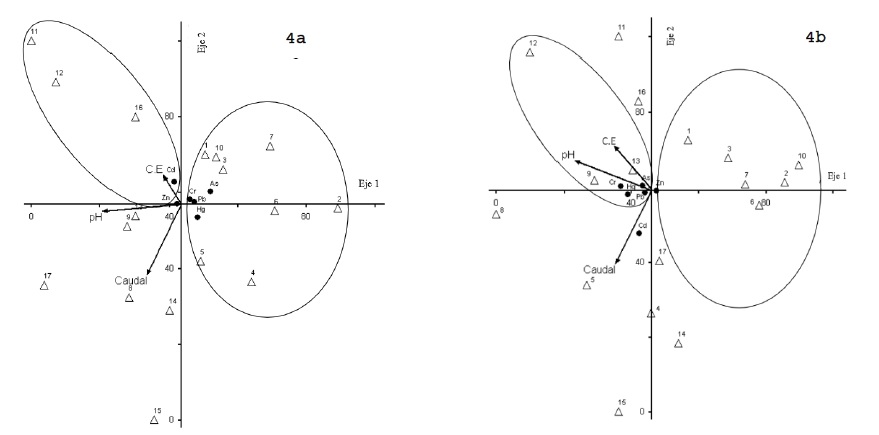Heavy metals in water and macroinvertebrates of the Ayuquila-Armería river basin (Mexico) and its af fluents
DOI:
https://doi.org/10.28940/terra.v41i0.1603Keywords:
farming, flow, pollution, environmental toxicologyAbstract
The Ayuquila-Armería river basin is classified as a priority hydrographic basin in Mexico for its high diversity and for the ecosystem pressure it is subjected to. The objective of this study was to determine the concentrations of heavy metals (As, Cd, Cr, Hg, Pb and Zn) in water and aquatic macroinvertebrates, in addition to physical and chemical parameters (pH, EC and flow) in the tributary basins and the main channel. The present investigation was carried out with samplings in the rainy season in 2015, and in the dry season in 2016, at 18 sites in the basin. Determinations of heavy metals, physical and chemical parameters, collection of aquatic macroinvertebrates and estimation of the flow of the tributaries were carried out at each sampling site. In surface water, only Hg and Pb exceeded the permissible limits for natural waters (0.02 and 0.0015 mg L-1 respectively) in 60% of the sites; in terms of concentrations in macroinvertebrates, the six metals exceeded the permissible limits in the 65% of the sites with concentrations of 0.33 to 7.07 mg kg-1, of these the Hg (7.07 mg kg‑1) and the metalloid As (5.19 mg kg-1) were the ones that presented the highest concentrations.
Downloads
Publication Facts
Reviewer profiles N/A
Author statements
- Academic society
- Terra Latinoamericana
- Publisher
- Mexican Society of Soil Science, C.A.

















